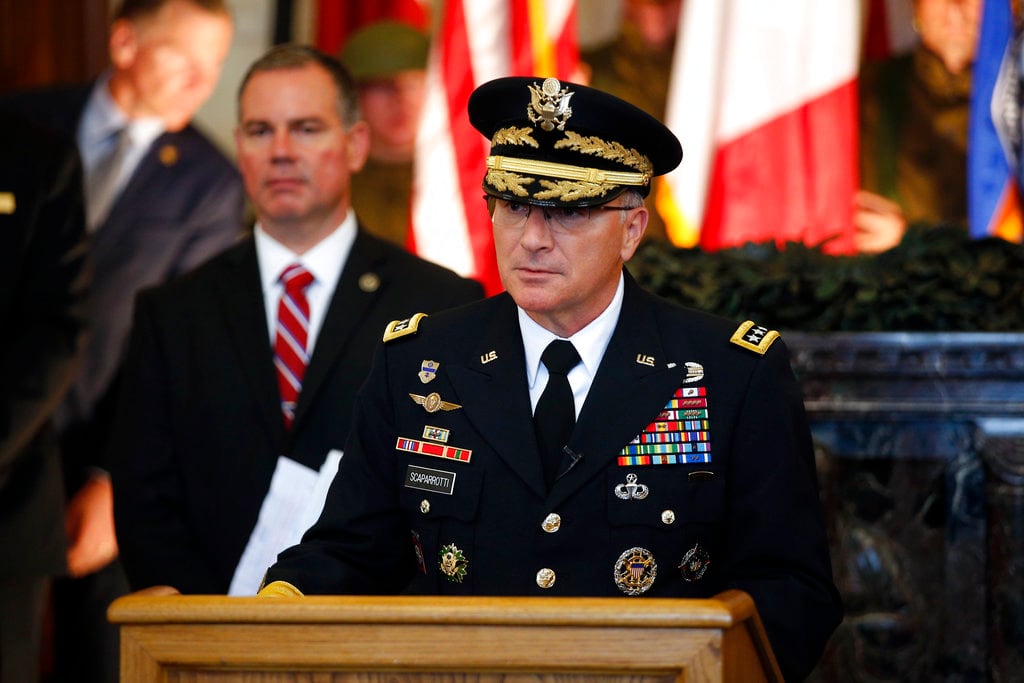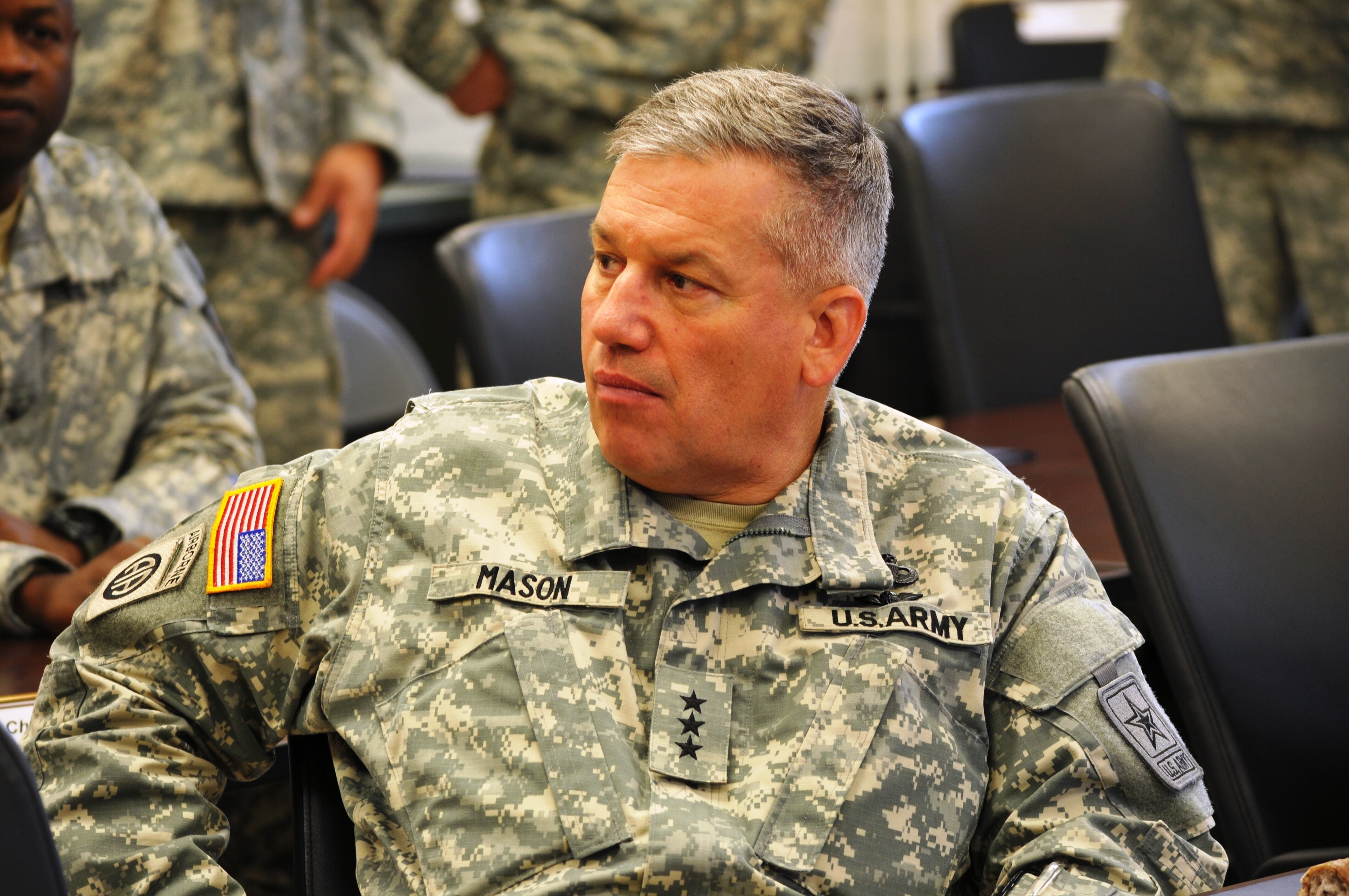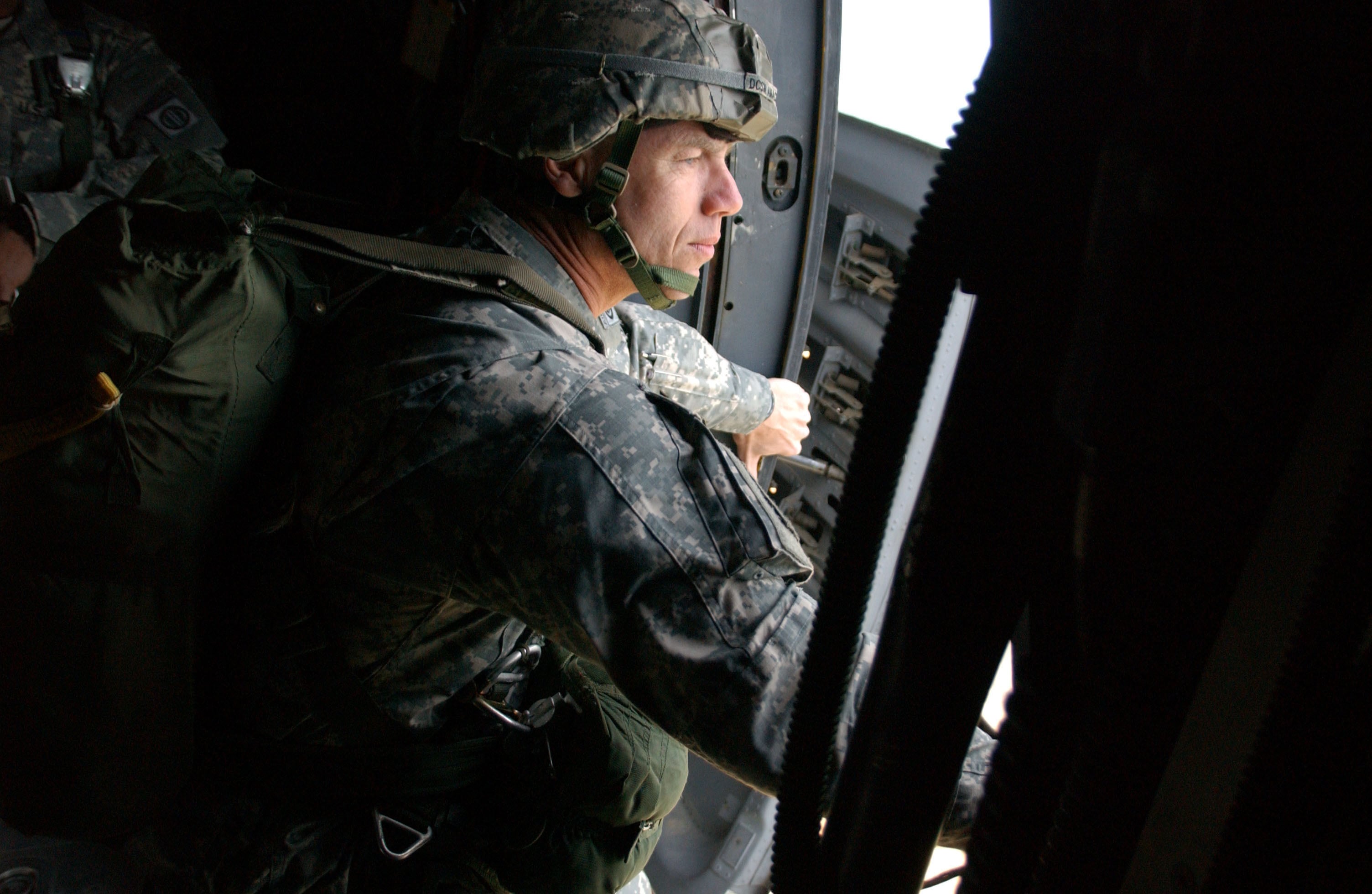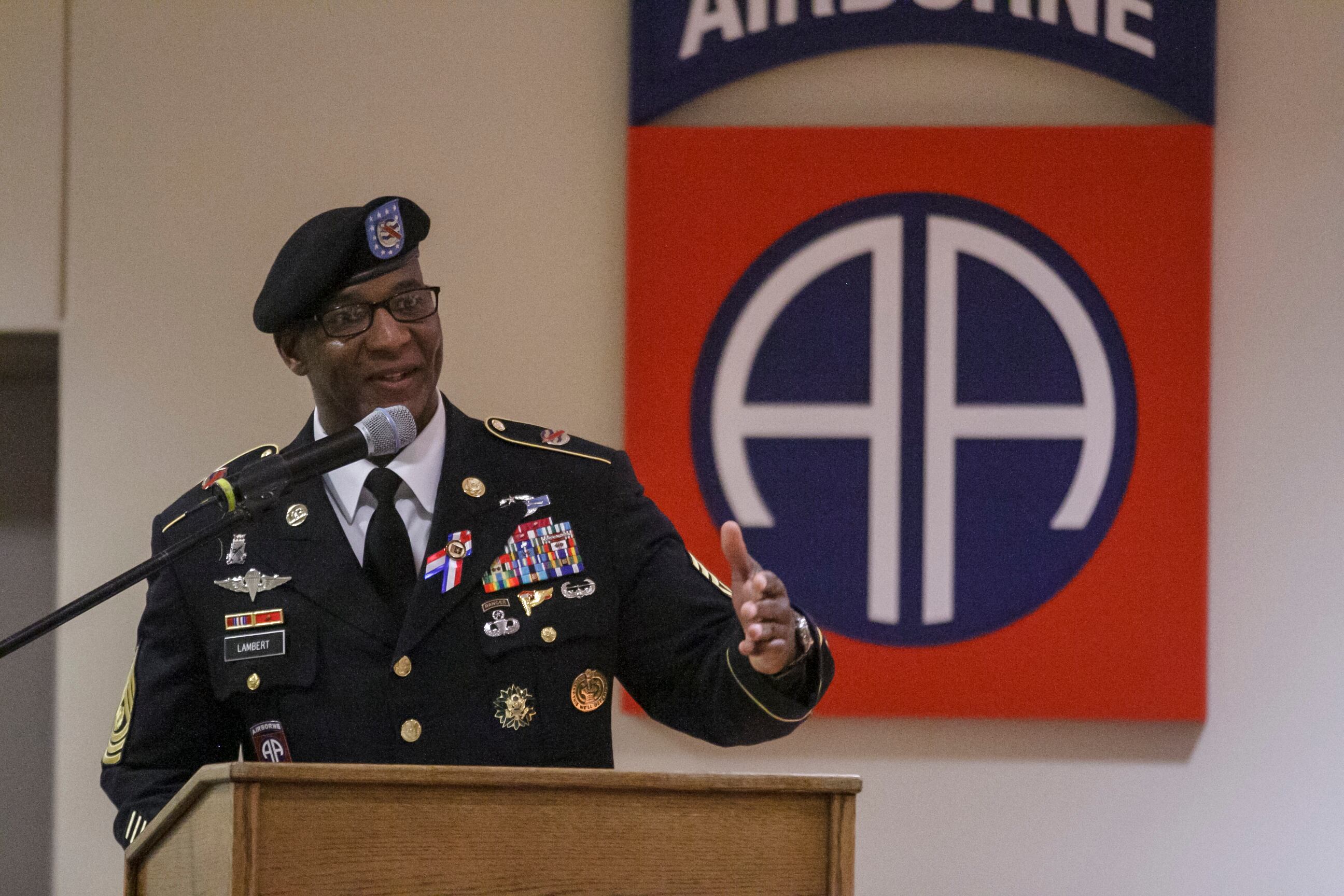This story was first published in The Fayetteville Observer.
FORT BRAGG — Nine paratroopers will be inducted into the 82nd Airborne Division Hall of Fame next month, officials announced.
The ceremony is 10 a.m. Sept 28 at Fort Bragg’s Hall of Heroes during the division’s All American Week.
The Hall of Fame honors veteran paratroopers based on their service within the division, their lifelong commitment to the division’s values, valorous combat action, and contributions to their chosen field outside of the division.
Twenty-one paratroopers were inducted into the inaugural class in 2018, 16 were inducted in 2019, 12 were inducted in 2020 and eight were inducted last year.
Inductees were selected by a board of senior leaders from nominations made by units in the division.
Criteria for induction included considering nominees awarded the Medal of Honor or those who served a minimum of two years in the division and at least five years removed from their last service in the division.
This year’s honorees are:
Gen. Curtis ‘Mike’ Scaparrotti
Gen. Curtis “Mike” Scaparrotti, a Logan, Ohio, native, commissioned into the Army in 1978 from West Point.
His earliest assignment was as a platoon leader, operations officer and company commander in the 3rd Battalion, 325th Infantry, 82nd Airborne Division.
He commanded the division’s 2nd Brigade Combat Team from 1999 to 2001 and became the 82nd’s Airborne Division commander in October 2008, deploying the division’s headquarters to Eastern Afghanistan and serving as commander for Combined Joint Task Force 82 and Regional Command East until 2010.

Scaparrotti’s other assignments included commanding forces during Operations Iraqi Freedom and Enduring Freedom in Afghanistan, serving as director of the Joint Chief of Staff and commander of the European Command prior to his retirement in 2019.
Lt. Gen. Raymond Mason
Lt. Gen. Raymond Mason served in the 82nd Airborne Division from 1983 to 1998, holding leadership positions from the company through the division level.
Mason commanded Company E, 407th Supply and Services Battalion, and went on to command 407th Support Battalion.

He was the division support command operations officer for Operation Urgent Fury in Grenada, responsible for supporting the no-notice deployment and sustaining combat operations for the division.
Mason has also served as the division’s assistant chief of staff and deputy chief of staff for the U.S. Forces Command and the Army.
After retiring from the Army in 2014, Mason has continued to help soldiers by serving as director for the Army Emergency Relief Fund.
Col. Benjamin H. Vandervoort
Col. Benjamin H. Vandervoort served in the 505th Parachute Infantry Regiment from 1940 to 1945 and was the regiment’s operations officer during the invasion of Sicily and Salerno, Italy.
He commanded the 2nd Battalion, 505th Parachute Infantry Regiment during the invasion of 1944 Normandy, leading his battalion into combat in Sainte-Mere-Eglise, Nijmegen and in Bastogne during the Battle of the Bulge.
After Vandervoort led an assault of the Waal bridge in Holland, he was described by Gen. Matthew Ridgway, commander of the division, as “one of the bravest and toughest battle commanders I ever knew.”

Vandervoort’s actions in Holland earned him Oak Leaf Clusters for his Distinguished Service Cross and two Oak Leaf Clusters for his Purple Heart.
He sustained multiple injuries throughout his time as battalion commander which eventually caused him to medically retire from service at the rank of colonel in 1946. After retirement, he served as a civilian for the CIA and the U.S. Army staff. He died at the age of 75 in 1990.
Cpt. John B. Sauls
Cpt. John B. Sauls commanded Company G, 401st Glider Infantry Regiment.
On June 9, 1944, Sauls led an attack on German defensive positions which were denying the progress of the Allied movement west from Normandy.
Without cover or concealment, Sauls and his company charged toward the Nazis, maneuvering down the 500-meter corridor directly into machine gun fire and artillery.
After moving down the causeway, Sauls realized he only had a squad-sized element with him and the rest of the company was pinned down, wounded, or killed.
Sauls made it across the corridor of fire and ran past the first line of German defense, shooting Nazis with his Thompson submachine gun.
For his actions, Sauls earned the Silver Star. He died in 1987 at the age of 73.
Capt. Gerald A. Wolford
Capt. Gerald A. Wolford served in the 82nd Airborne Division from 2000 to 2006.
As a staff sergeant deployed to Iraq in 2003, the gun section of Wolford’s Company D, 3rd Battalion, 325th Infantry came under fire during a river crossing in As-Samawah, Iraq.
Unable to suppress with small arms, Wolford silenced the position using a non-standard tactical vehicle and anti-tank weapon.
As his unit approached the city, a rocket-propelled grenade struck his vehicle, wounding two paratroopers.
Wolford moved the wounded paratroopers to safety before his vehicle was struck a second time when escorting a dismounted squad to a forward position.
Wolford continued directing section fires and engaging the enemy when a third rocket-propelled grenade denoted near his truck, and a fourth grenade passed over his head.
For his actions, Wolford was awarded the Silver Star and selected as the 2003 USO Soldier of the Year.
He commissioned into the infantry branch in 2006 and finished his career as an information operations officer at the Department of the Army Headquarters in the Pentagon.
Wolford became a school teacher in Sullivan, Maine, after his retirement and now lives in Centre Hall, Pennsylvania.
1st Lt. Waverly Wray
1st Lt. Waverly Wray, of Tocowa, Mississippi, served as a platoon leader and the executive officer of Company D, 2nd Battalion, 505th Parachute Infantry Regiment from 1940 to 1944.
Wray participated in airborne operations into Normandy and Holland in support of Operation Overlord and Operation Market Garden.
During the defense of Sainte-Mere-Eglise, Wray’s company was attacked by two reinforced Nazi battalions.
Despite enemy machine gun fire and casualties, Wray crawled in front of his lines, destroyed the position with grenades and killed 15 enemy soldiers with rifle fire.
After orders to conduct an attack on the rest of the German battalion, Wray conducted a personal reconnaissance to determine the size of the enemy force and found a battalion headquarters of eight Nazis.
Wray killed all eight officers, enabling a successful defense for his unit.
Wray was later killed in action at the age of 21 during operations in 1943 in Holland.
Command Sgt. Maj. Wolf Amacker
Command Sgt. Maj. Wolf Amacker served in the 82nd Airborne Division from 1996 to 2006, holding leadership positions from squad leader to command sergeant major in the airborne field artillery.
After serving as commandant of the 18th Airborne Corps Noncommissioned Officer Academy in 2001, Amacker was selected as the 82nd Airborne Division’s 21st command sergeant major.
While serving as the division’s senior enlisted advisor, he deployed to Iraq in support of Operation Iraqi Freedom and established the first Iraqi Training Center that trained thousands of Iraqi nationals and brought security to the conflict in the Sunni Triangle.

Amacker conducted 319 airborne operations during his time in the division.
After retiring in 2006, he served as the division’s chief of investigations from 2006 to 2009.
In 2009, Amacker became chief of operations for Fort Bragg’s range control. Since 2015, he’s served as Fort Bragg’s installation range officer.
Command Sgt. Maj. Bryant Lambert
Command Sgt. Maj. Bryant Lambert joined the Army as an infantryman in 1983 and was assigned to the 2nd Battalion, 508th Infantry Regiment, 1st Brigade, 82nd Airborne Division after completing the U.S. Army Airborne School.
He returned to the unit in 1993 after serving as an instructor for the Army Ranger Training Brigade at Fort Benning, Georgia, and completing the U.S. Army Drill Sergeant School at Fort Leonard Wood, Missouri.
Upon completion of the U.S. Army Sergeants Major Academy at Fort Bliss, Texas, in 2000, Lambert was assigned to the 1st Battalion, 505th Parachute Infantry Regiment, 3rd Brigade, before becoming the 3rd Brigade Combat Team’s regimental command sergeant major.

In July 2010, Lambert became the 82nd Airborne Division’s command sergeant major and served as the senior enlisted advisor for Regional Command-South and Combined Joint Task Force-82 during Operation Enduring Freedom from October 2011 to September 2012.
Lambert, who’s served in every position from rifleman to division command sergeant major, spent 26 years of his Army career serving in the 82nd Airborne Division, before retiring in 2018.
Cpl. John S. Gilbertie
Cpl. John S. Gilbertie was born in Italy before moving to America and growing up in Westport, Connecticut.
He served in the 82nd Airborne Division from October 1917 to May 1919, which included serving as an infantryman and squad leader in ompany E, 327th Infantry Regiment during the St. Mihiel and Meuse-Argonne campaigns of World War I.
Gilbertie led nightly patrols for the 327th Regiment in October 1918, which earned him the Distinguished Service Cross.
According to his citation, he carried messages from the front lines to battalion and regimental headquarters in October 1918 near Cornay, France.
“Although suffering from the effects of gas and sickness, on two occasions, he volunteered and led patrols in the enemy territory, obtaining and returning with information of the utmost importance and value,” his citation states.
Gilbertie was also awarded the Silver Star Medal, the World War I Victory Medal with three Clasps and the Italian War Cross.
After the war, Gilbertie started a taxi service in Westport, Connecticut, and also served as an elected representative for the Westport Town Hall.
He died at the age of 81 in 1977.




